El Salvador is full of biodiversity, with many different animal and plant species existing within its natural ecosystem. The geography and life within the country are under threat to natural disasters and, as a result, the target for conservation and sustainability measures. However, the people of El Salvador still take great pride in the country’s natural landscape. The beautiful country is home to many different flowering plants and birds, mammals, and insects that live in its wilderness. One representation of this patriotism and national pride is in El Salvador’s choice of national flower.
Most countries choose a national flower to represent part of the culture, history, or geography where it natively grows. At times, the chosen plant species has historical, cultural, or sacred importance. At other times, countries choose a floral emblem that is one of the most abundant plants growing within its borders.
El Salvador is the smallest country in Latin America. Despite its small size, it has diverse terrain – pine forest regions, tropical forests, volcanic regions, mountains, and Pacific coastline. This unique geography is home to hundreds of animal species and many more native plants. One of these species is the national flower of El Salvador, the izote. This article will dive into learning in more detail all about the izote. We will also discuss the plant that bears it, the yucca.

El Salvador is the smallest country in Latin America.
©iStock.com/Joey’s Lens
What is El Salvador’s National Flower?
El Salvador’s national flower is the izote, which is a blossom from a plant in the Yucca genus. The izote flower is also known in Spanish as “flor de izote,” which means “yucca flower.” Yucca blossoms are fragrant, often bell-shaped, white flowers that bloom on yucca plants once a year in the right conditions. Depending on the species and where the yucca plant is growing, these flowers may appear during the spring or summer. In El Salvador, they often blossom during April or May. While the yucca plants grow year-round and in many different countries, “izote” often refers specifically to the flowers from the species Yucca elephantipes. This is one of the common species of yucca found in El Salvador and neighboring countries.
In El Salvador, izote flowers grow indoors in pots or outdoors in gardens. It has particular cultural significance because of its many uses and its prevalence in Salvadoran landscaping and cuisine. Not only is it a food, but it is also a raw material for producing household goods and textile products. Since recognized as the official flower of the country, the izote has also become a national symbol of the country’s culture and values.
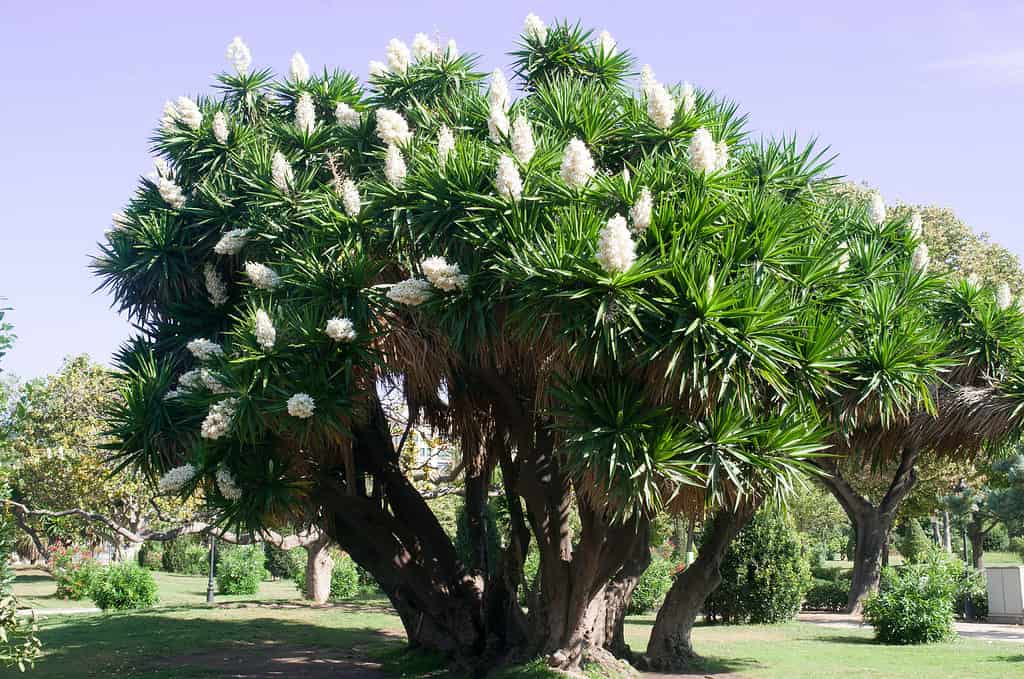
While the yucca plants grow year-round and in many different countries, “izote” often refers specifically to the flowers from the species Yucca elephantipes.
©Jordi Roy/Shutterstock.com
What is the Izote Flower?
The plants which produce the flowers known as “flor de izote” or simply “izotes,” are slow-growing plants in the Yucca genus. Yucca includes dozens of different species, which grow natively in North America, South America, and the Caribbean islands. These species are part of the Asparagaceae family (the “asparagus family”) and the Agavoideae sub-family. They are related to another group of succulent species: Agave plants. In fact, because yucca and agave species are often confused for each other because they have some similar physical features.
Yucca plants are succulents and grow in a rosette of stiff, spiky leaves that form a base. The flowers come from a stalk that grows in the middle of this rosette. However, these flowers usually only appear on yucca plants that are thriving in an outdoor environment. Yucca grows natively in the warmer parts of North America, Central and South America, and the Caribbean. There, you can find it growing to be small or many feet across, though they are slow-growing and take many years to reach a large size.
What Do Izote Flowers Look Like?
Yucca have long, sword-shaped, spiky leaves with pointy tips. Though these leaves are usually green, they also come in shades of red or blue. Yucca plants may be grown indoors as succulents in pots. However, it is only when they grow outdoors that they produce beautiful flowers. The plants will not flower indoors. If they do, that is highly unusual. However, in the wild or in a garden landscape, yucca plants are a succulent that produces beautiful white flowers annually.
The plants flower annually from upright stems that reach up to 3 feet tall and grow vertically from the center of the yucca plant. The flowers are white with six petals and appear on the length of the stem, with the petals of each individual flower growing to be as long as 2 inches. These flowers have a pleasant, subtle fragrance. Some describe these flowers as bell-shaped, though they grow in clusters together that create a triangular or pinecone-shaped formation. These flowers are waxy and attract pollinators such as the yucca moth.
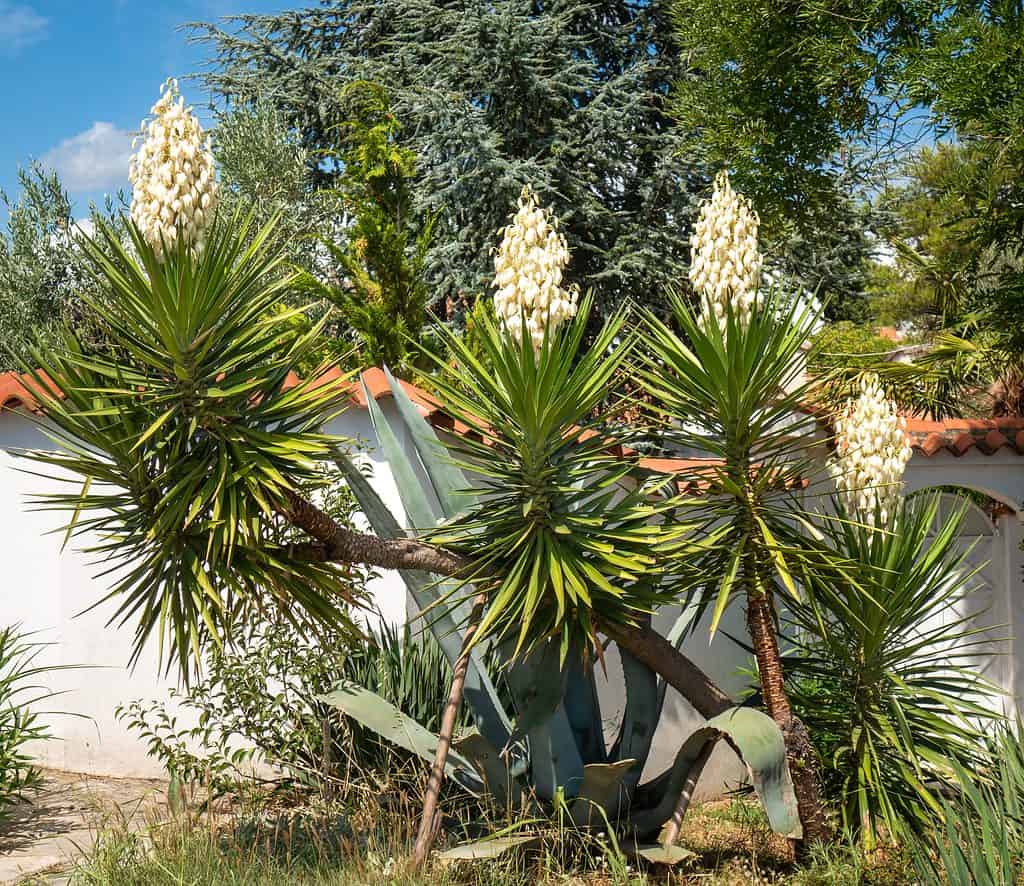
The plants which produce the flowers known as “flor de izote” or simply “izotes,” are slow-growing plants in the Yucca genus.
©Peter Klampfer/Shutterstock.com
Where Do Izote Flowers Grow?
Izote flowers blossom in climates where yucca plants can grow outside. Yucca plants grow best in sandy, dry soil like that of the desert climates of the southwestern United States and Central America. Yucca plants are low-maintenance and easy to care for. This makes them a popular choice for desert landscaping. However, if you want to see a yucca plant bloom, it needs to have ideal conditions that will help it thrive. The plants are drought-tolerant and can survive with very little water. But in addition to this, they are a slow-growing group of plants and need sun, warmth, and soil with good drainage in order to thrive.
When izote flowers appear, it is a sign that the yucca plant is growing in well-drained soil where the roots did not become overly water-saturated and it gained sufficient sunlight.
In El Salvador, Mexico, and nearby countries, izote flowers appear in a cluster along the stalks that emerge from the center of the yucca plant. In El Salvador’s diverse terrain, yucca plants can be found in mountain regions, garden areas, and even near beaches on the country’s coastline. Yucca is commonly cultivated for use in hedges.
There, the izote flowers typically appear in late spring or early summer. They often bloom in April or May. After the flowers fade, you can trim the yucca stalk.
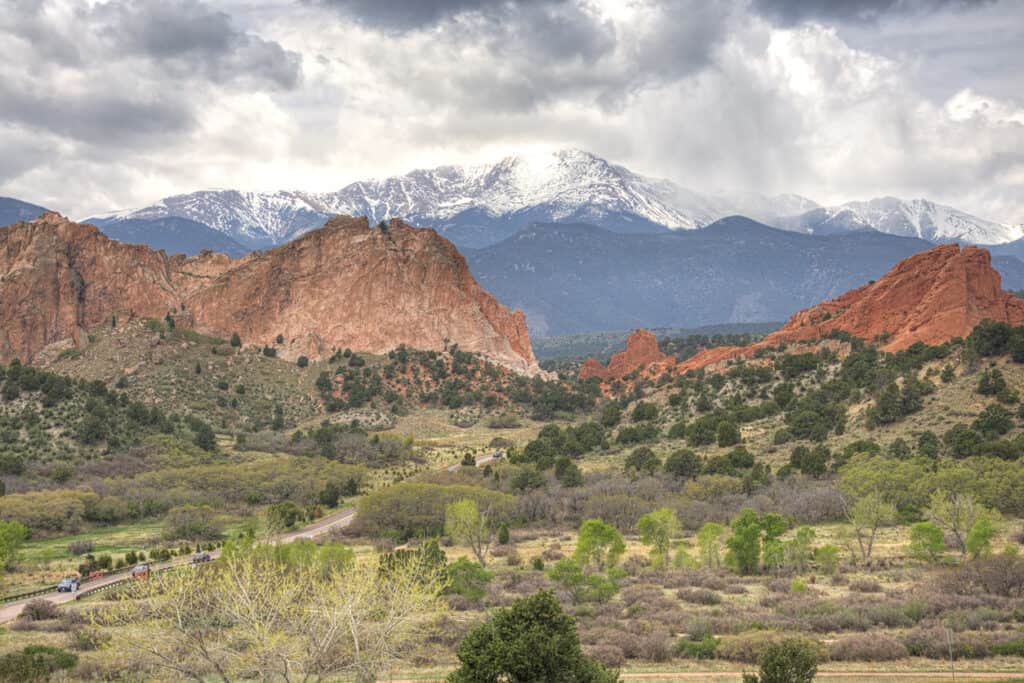
Yucca plants grow best in sandy, dry soil like that of the desert climates of the southwestern United States and Central America.
©iStock.com/Cristinatrif
What is the Cultural Significance of Izote Flowers in El Salvador?
In 1995, a national decree named the izote as the national flower of El Salvador. Why was the izote chosen and how did it come to have such an esteemed place in Salvadoran culture? When the National Congress of El Salvador made this designation official in December 1995, it was after the choice of the current president, Maximiliano Hernández Martínez.
Originally, the izote flower was chosen because of its valued place in multiple parts of Salvadoran culture and the country’s economy. Not only are the flowers beautiful, but the yucca plant has significant agricultural uses in El Salvador. The leaves of the yucca plant are used as a raw material in producing textiles such as baskets, ropes, and sandals. The flower is used in brewing alcoholic beverages and creating household cleaning products, like detergent. Not only that, but the edible flowers appear in multiple local dishes, such as salsas, soups, and egg dishes, to which it brings a slightly bitter flavor.
The word “izote” to refer to yucca plants is Spanish. This word is derived from the word iczotl. Iczotl was, historically, the word used by native peoples living in Central America. These people were the Nahua people of Central America. They spoke Nahuatl, a group of languages in the Uto-Aztecan family.
Apart from the yucca’s agricultural uses, the izote plants are a staple of landscaping. They are hardy and easy to take care of, so can often be found planted along fence lines, roads, or in landscaped yards.
Where Does the Izote Appear as a Symbol of El Salvador?
As the national flower of El Salvador, you may at times see the izote appear in official communications or to represent the pride of the Salvadoran people. The izote flowers can currently be found on stamps, in official government ads and celebrations, and in the art of Salvadoran people. You might also find that Salvadoran creators make “flor de izote” products to convey their national love and pride in the form of stickers, posters, and apparel.
Are Izote Flowers Edible?
Izote flowers are edible! If you are lucky enough to try an izote flower during the blossoming season in the springtime, try one! Some people describe the petals as sweet and crunchy, and somewhat similar to the taste of an artichoke. The centers are bitter, so some people avoid eating those, even though a slight bitterness will still remain even when the center is removed. In El Salvador, izote flowers can be made into multiple local dishes. Among these is the traditional chicken stew known as tesmole, which incorporates petals from the izote flower.
Tesmole is made by combining meat, vegetables, herbs, thickened corn dough called masa, and a handful of izote flowers. To keep the soup from becoming bitter, they only boil the flower petals and avoid the center.
This dish is popular throughout multiple countries of Central America, including El Salvador. However, it is not the only way to cook izote! Local cooks also incorporate izote petals into other recipes, such as “flor de izote con huevo,” which is Spanish for “yucca flower with eggs.” Others fry the petals to eat them.
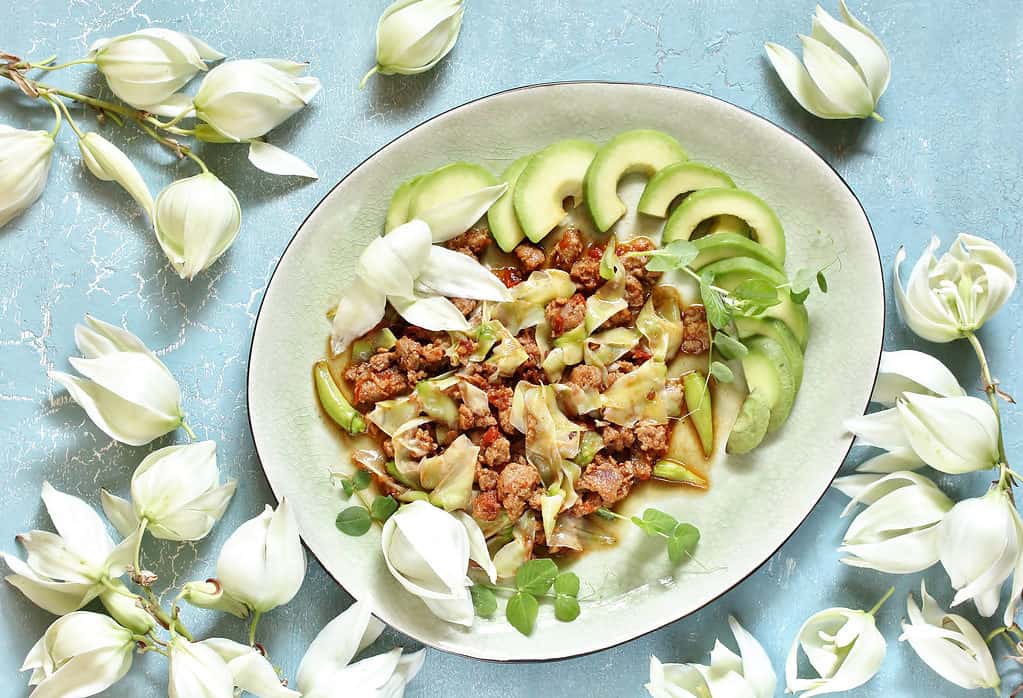
Izote flowers are edible! If you are lucky enough to try an izote flower during the blossoming season in the springtime, try one!
©Lyudmila Mikhailovskaya/Shutterstock.com
What Are the Other National Symbols of El Salvador?
El Salvador has multiple symbols that represent the country and its culture in the global arena. These symbols include the well-recognized national flag and the coat of arms, which was adopted more than 100 years ago. However, there are also several other symbols, including the national flower, which the government and people of El Salvador chose to represent their history, geography, and culture.
Here are some of the other symbols chosen to represent El Salvador.
- The National Flag of El Salvador, finalized from existing versions in 1912 by then-president Manuel Enrique Araujo. The flag has two blue stripes to represent the Atlantic and Pacific Oceans, separated by a white stripe to represent peace. At the center of the flag is the national coat of arms.
- The National Coat of Arms became an official patriotic symbol along with the flag in 1912. It includes references to the mountains in El Salvador, both the Atlantic Ocean and the Pacific Ocean, indigenous spears to represent independence, laurel branches to represent the various departments (similar to states) in El Salvador, and several other cultural icons.
- The Prayer to the Flag was written in 1916 by a man named David Joaquín Guzmán and added to the list of official Salvadoran symbols in 2001.
- The National Anthem was first presented in 1879 but became an official symbol in 1953.
- The National Bird is the torogoz, which is also known as the turquoise-browed motmot.
- The National Trees are the maquilishuat and the balsamo.
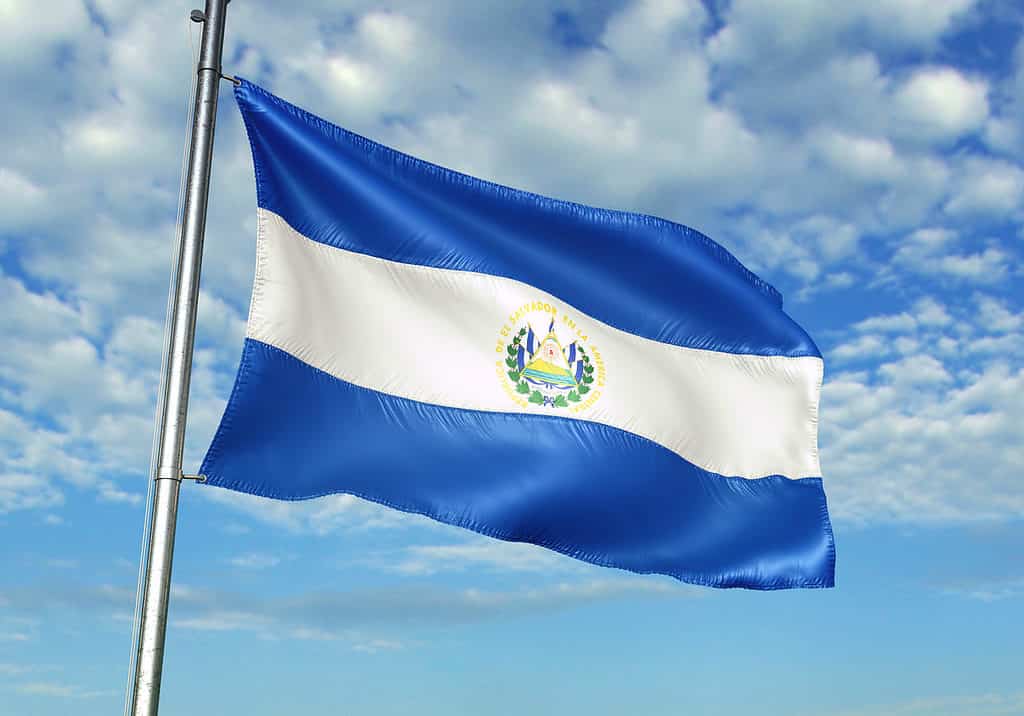
The National Flag of El Salvador, finalized from existing versions in 1912 by then-president Manuel Enrique Araujo.
©iStock.com/Oleksii Liskonih
These are the official symbols chosen to represent El Salvador as a country to the world. However, there are many other iconic foods, animals, and plants that are important parts of Salvadoran culture. They provide a window into this unique land. The izote flowers of yucca plants are just one of these cultural icons!
The photo featured at the top of this post is © William Marin/Shutterstock.com
FAQs (Frequently Asked Questions)
What is El Salvador's national flower?
El Salvador’s national flower is the izote, which is a blossom from a plant in the Yucca genus. The izote flower is also known in Spanish as “flor de izote,” which means “yucca flower.” Yucca blossoms are fragrant, often bell-shaped, and white flowers that bloom on yucca plants once a year in the right conditions.
Are izote flowers edible?
Izote flowers are edible! If you are lucky enough to try an izote flower during the blossoming season in the springtime, try one! Some people describe the petals as sweet and crunchy, and somewhat similar to the taste of an artichoke. The centers are bitter, so some people avoid eating those, even though a slight bitterness will still remain even when the center is removed.
Thank you for reading! Have some feedback for us? Contact the AZ Animals editorial team.






